A Love Letter to Sugar Snap Peas

I really struggle to identify my “favorite” in any category of… anything, but I feel pretty confident that sugar snap peas are my favorite vegetable (definitely my favorite legume, at the least).
I originally started eating them back in middle school or high school via the frozen microwaveable steam bags from the grocery story (usually Birdseye, if I recall correctly). On their own, these bags were incredibly plain; but add some salt, pepper, and a dollop of margarine and the flavors were quite pleasant.
Snap peas taste like a sweet green bean, with a lot more crisp, flavorful “meat” to the bean than most green beans. You can just eat the peas, or eat the whole pod (with ends removed). Sometimes the stringy vein that runs along the pod’s seam can be too tough to chew and you might want to separate it in advance. (Or just pull it out of your mouth after chewing the rest, there’s no shame here.)
Snap peas can be eaten alone (with some seasoning) raw or cooked (my favorite way to cook them listed below), or used in stir fry, some salads, or other veggie-enhanced meals.
Green beans are usually the “safe” vegetable for picky eaters. For the longest time, it was the only vegetable I would eat. I grew up on plain, flavorless canned grean beans heated up in a saucepan. That got some green in me, but was hardly a flavorful eat. Snap peas are a great opportunity to take an existing, safe food option and expand upon it. They’re very similar to green beans, but can pack a lot more flavor and texture. If it still sounds too “out there” I would suggest starting with frying up some fresh green beans (the good stuff) as a step up from canned/frozen, and go from there. Snap peas are only a small step up from some fresh, well-cooked green beans! They have that "vegetable" flavor that beans have, plus some unique sweetness that enhances it (and makes it feel less obvious that you're just eating a plant, makes it less "grassy").
Growing
The frozen bags are alright, but (as with most fruits and vegetables) you lose a LOT of the texture and flavor that make snap peas good from these mass-produced bags. Still eat them if that’s your only access to them, I’m not trying to sound snobby. Just saying I’m pleasantly surprised at how much of an upgrade growing my own has been.
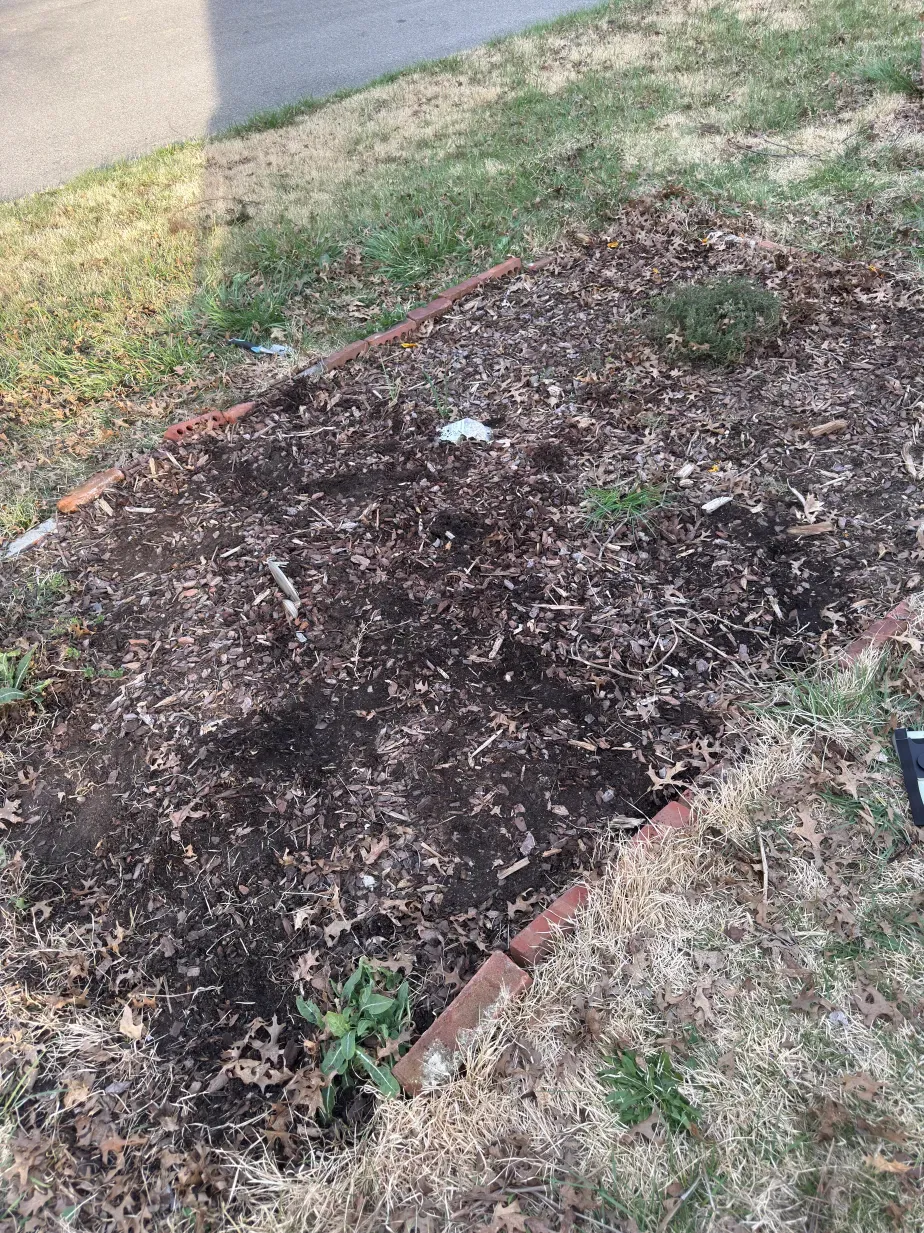
We’ve historically grown green beans in our home garden (and still will soon this year), but this spring we decided to first sow some snap peas that we picked up from our local nursery. They came in a big pouch for $4.00, with way more than we needed; this will last us a few years (or let us do an entire garden of just snap peas if we were crazy).
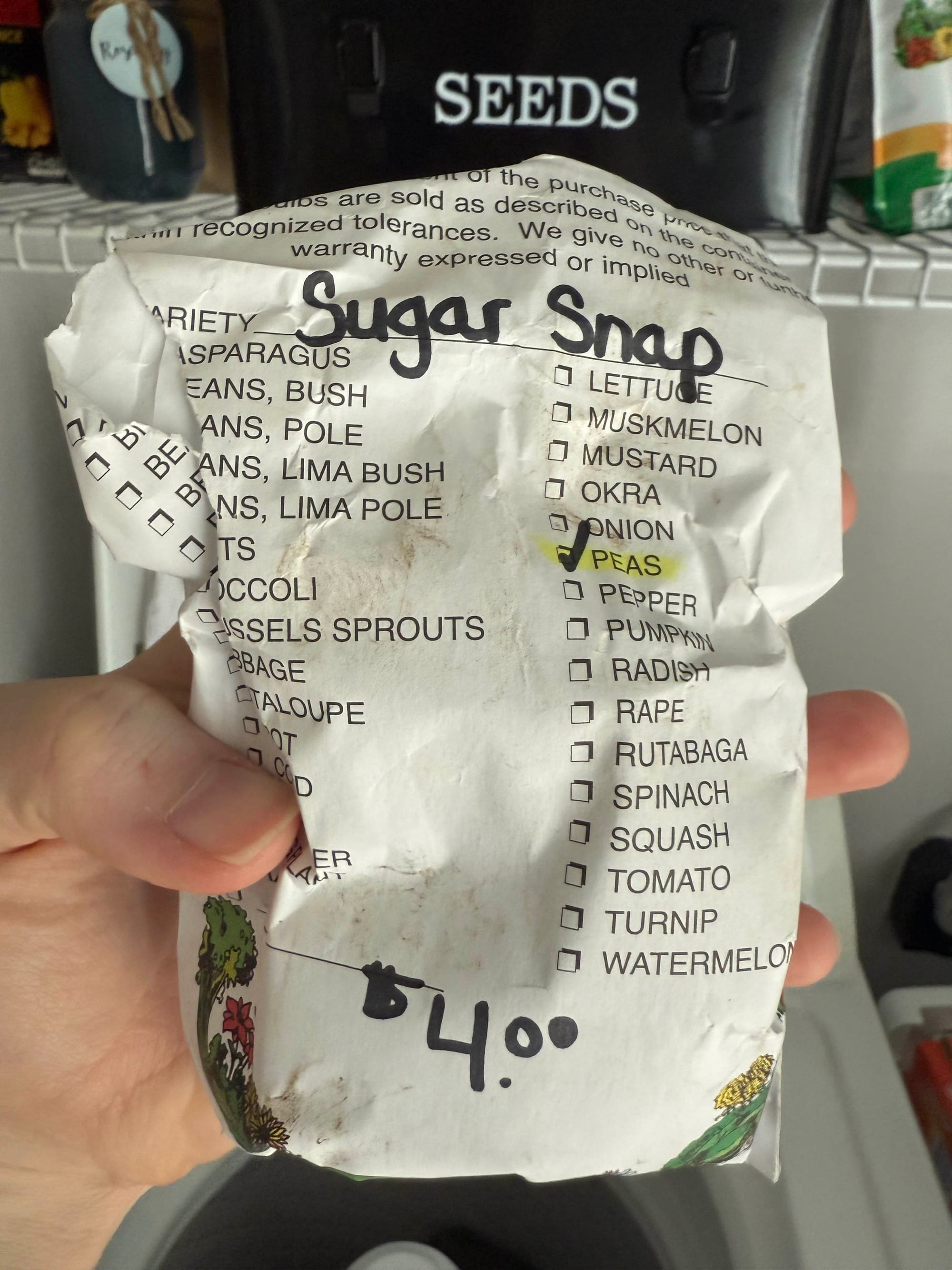
We planted them at the end of March – and by some luck, the squirrels and birds did not eat them all as they did our green bean seeds last year – and by mid-late May they were ready to start grabbing onto something. We put in our trellis and let them start climbing, and by the first week of June have already started producing plump, ready-to-pick snap peas.
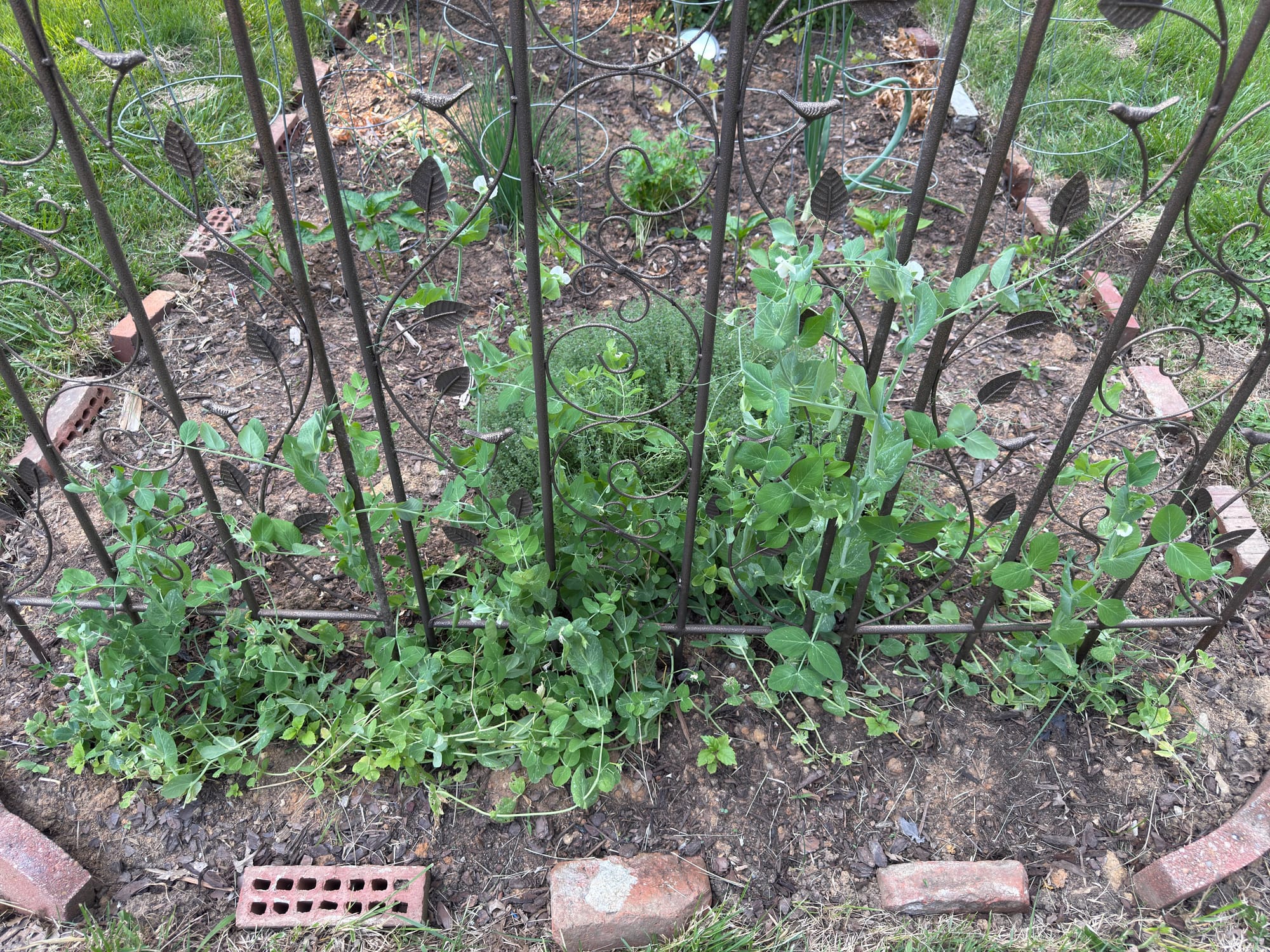
My first harvest was already more than enough for a big side to a family dinner.
My favorite way to cook snap peas
Fresh snap peas can be eaten raw, but I think they’re much better cooked a bit. Thankfully, it’s super easy and quick.
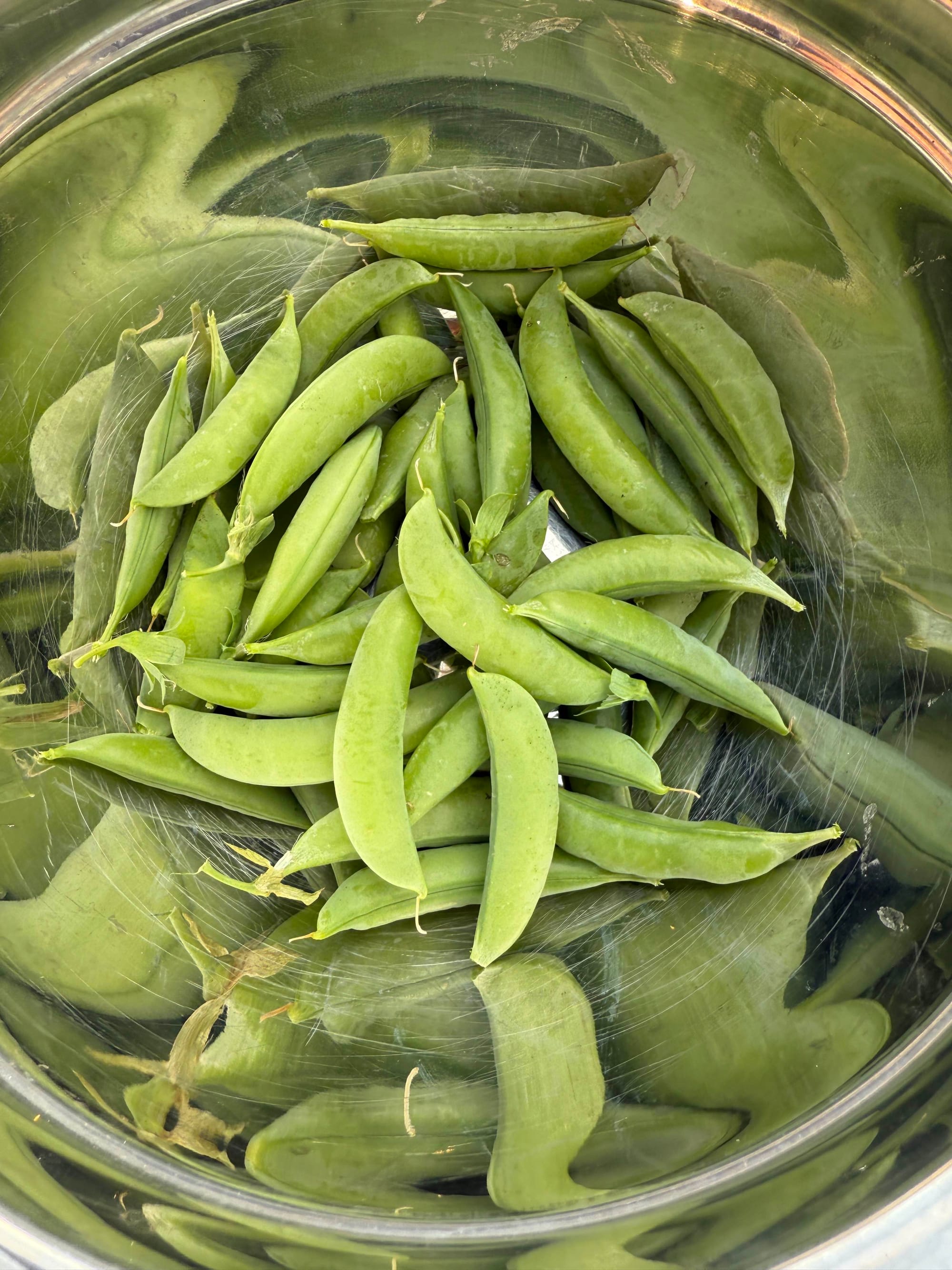
Grab a cutting board, knife, skillet, some oil, salt, pepper, garlic, and half a tablespoon of your favorite butter.
- Heat the skillet over Medium heat (for my stove/skillet, I went a little lower than medium)
- As the skillet heats, trim the ends off your snap peas. Then rinse thoroughly and dry them (water + oil = crackle)
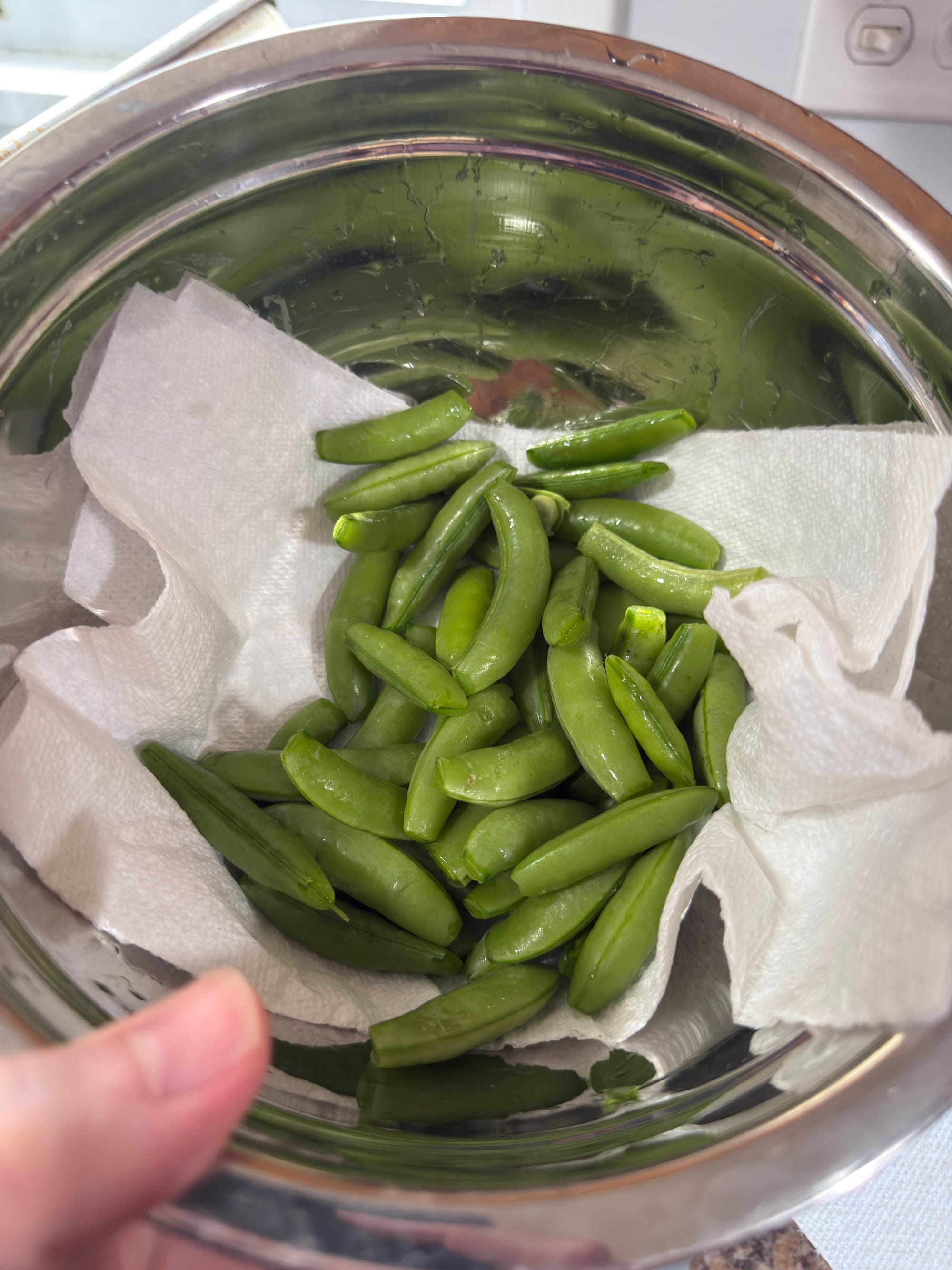
- Once your skillet starts getting warm, add in enough oil to coat the bottom (maybe ½ to 1 tbsp?). Swirl it around to cover the bottom of the pan.
- [Using my infrared thermometer, I aimed for around 300-325 degrees Fahrenheit on my pan. It got a little too hot while I trimmed so I turned the heat down and turned it back up a bit as I cooked.]
- Add the sugar snap peas. Be careful: Any leftover water on the peas (or leaking from them) will make the oil splatter a bit. This won’t be a safety issue if your pan isn’t too hot, but will make a little mess. (Cooking is messy, embrace it.)
- Cook the snap peas for 3-7 minutes, stirring frequently.
- After about 2 minutes or so, sprinkle on some salt, pepper, and garlic. I like to use the Killer Hogs AP Seasoning Rub [Amazon affiliate link] for this – but it’s literally just salt, pepper, garlic and MSG. Just makes it feel easier to get a good balance.
- You want them to be tender enough for a fork to penetrate, but still have some rigidity to them. They should not get mushy.

- Once the peas are done, turn off the heat and add your ½ tbsp of butter. I like to use Kerrygold for these finishing dollops, as it adds some good flavor. Let the snap peas sit (and melt the butter) for a couple minutes, stirring a few times.

- Consider finishing with some coarse or flaky kosher salt to really bring out the flavor.
- I also like adding a sprinkle of parmesan cheese to veggies fried this way.
- ENJOY!
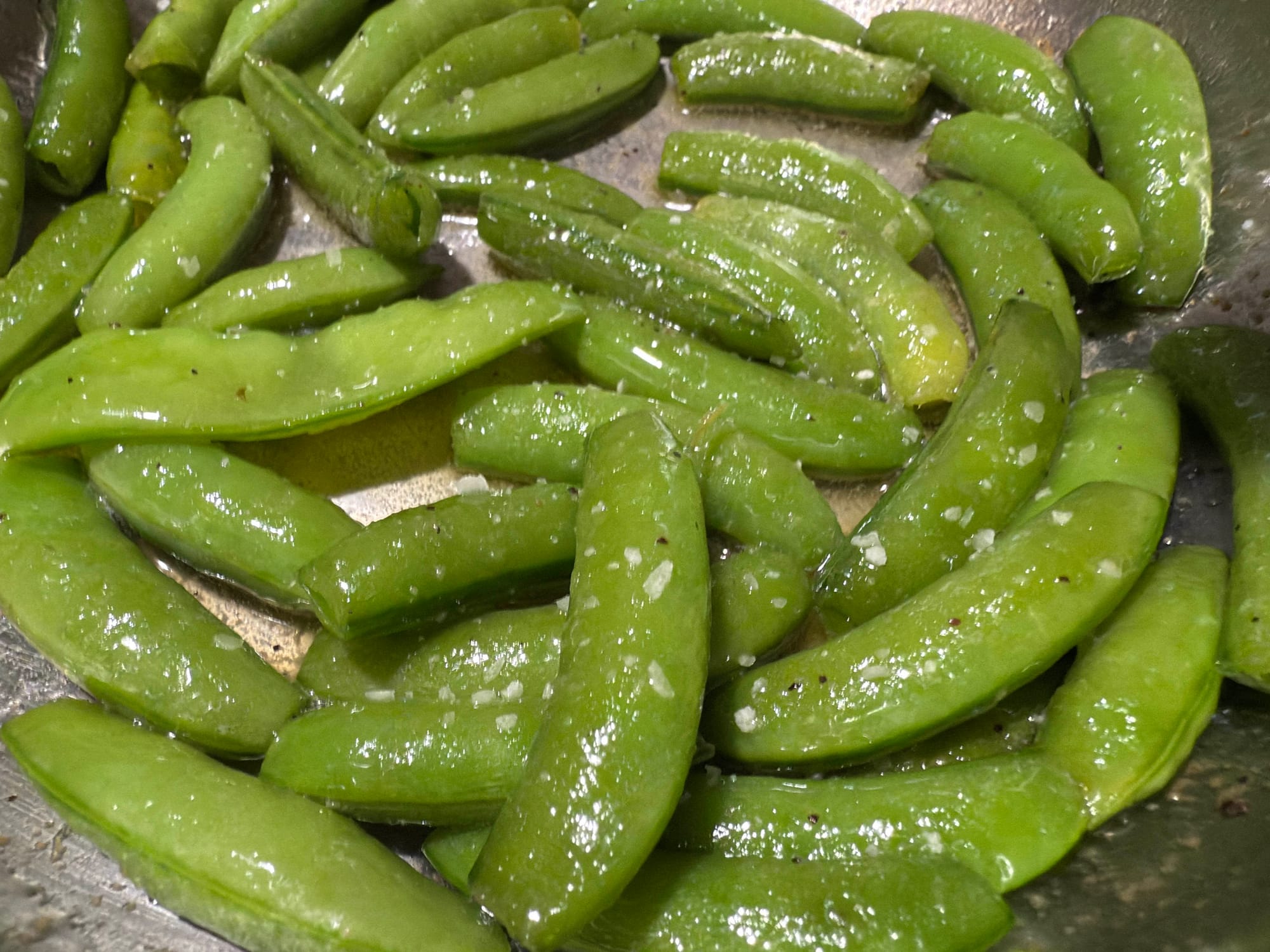
You can also freeze snap peas; useful since they produce frequently on the vine. It’s better to blanch them, as freezing them raw will break down the structure of the beans and pods, leading to mushiness when you cook them. I haven’t done this for this year’s batch, so I will update when that time comes!